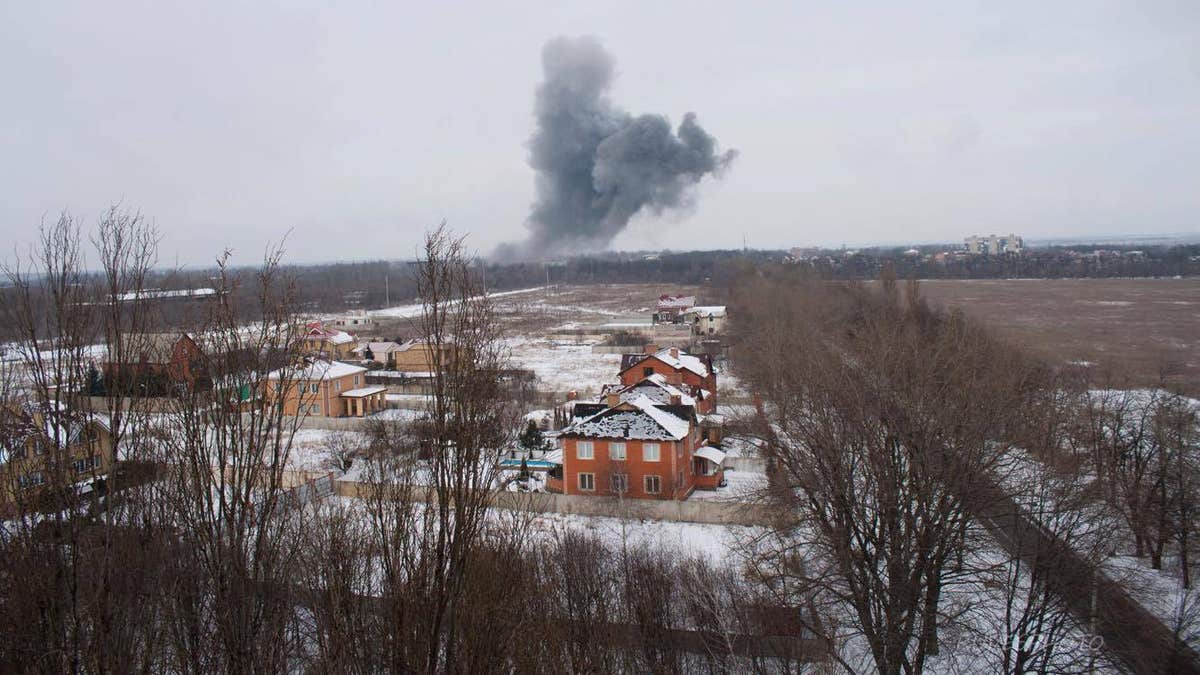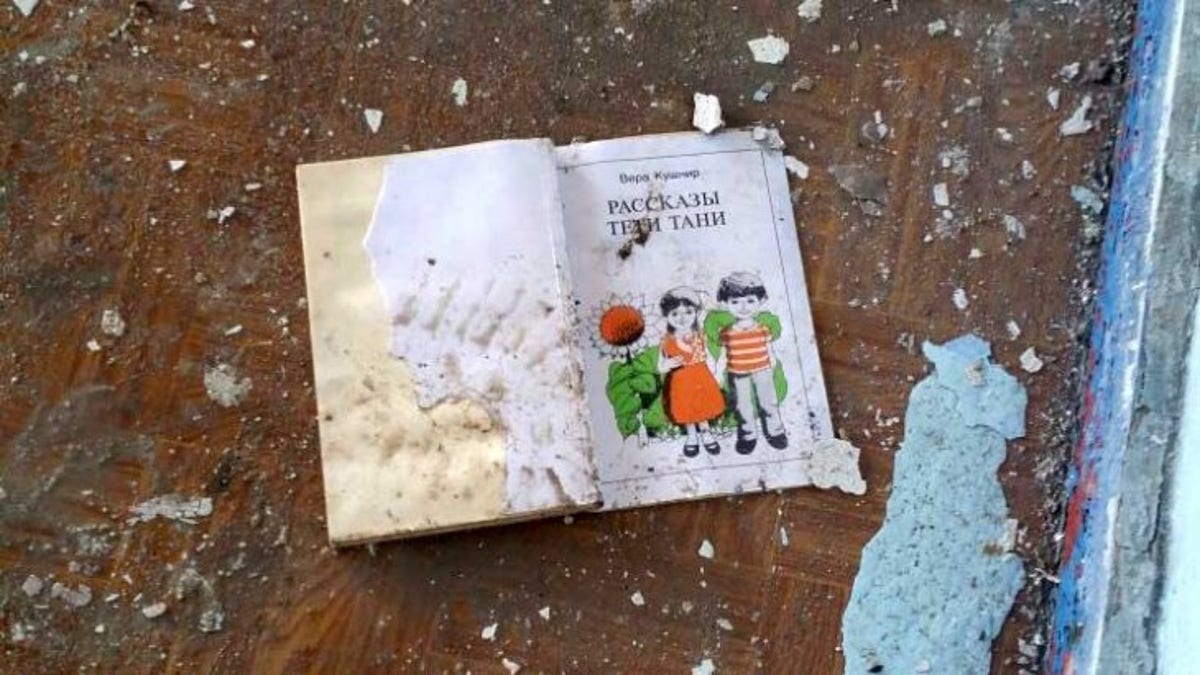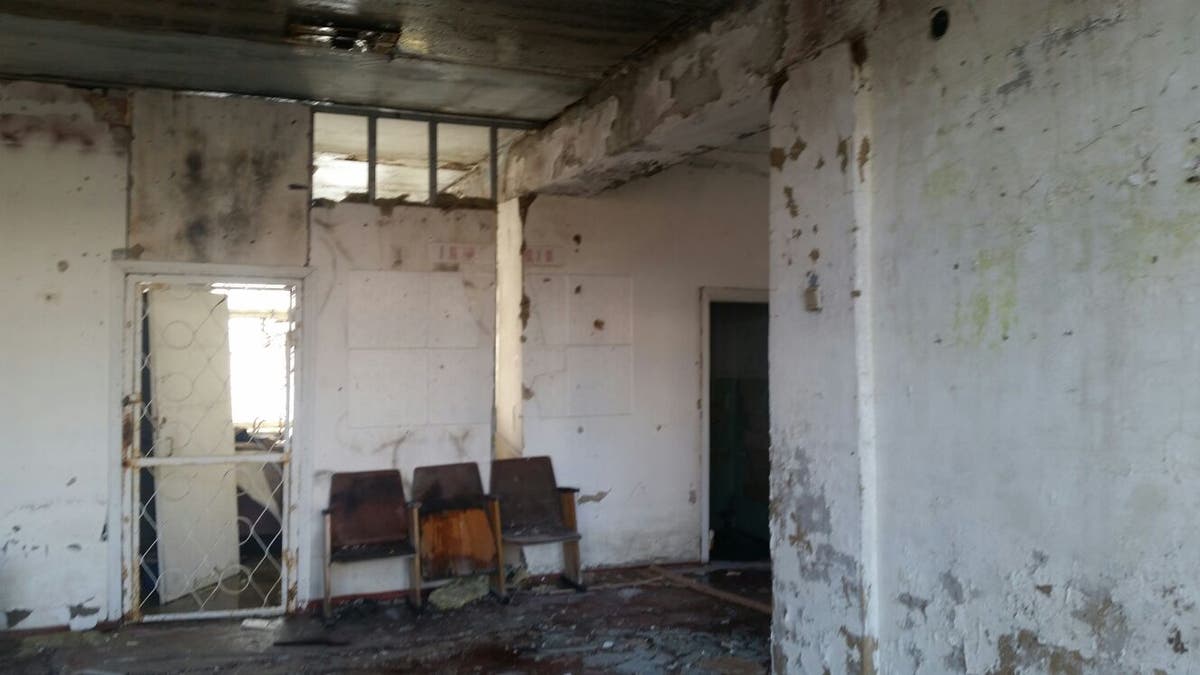
Artillery shells hit industrial areas in Donetsk as the conflict enters its third year.
This isn’t a cold war; it’s a hot war. And experts caution that the conflict in Eastern Ukraine could soon get a whole lot hotter if fighting damages huge industrial storage units of chlorine gas and there is a deadly release of the toxic gas.
“If one of those uncontrolled sites containing chemicals were to detonate, tens of thousands of people could be poisoned. It is a potential disaster on the scale of Chernobyl,” Robert Amsterdam, Russian political expert and lawyer at international law firm Amsterdam & Partners, told Fox News.
The risk is hardly hypothetical. Late last month a stray artillery shell hit the Donetsk Filter Station’s chlorine gas depot, which holds 15,000 pounds of chlorine gas. While the containers -- by sheer luck – were not damaged, the incident raised serious red flags.
“In a situation like this, where a war zone is near a concentration of industrial facilities where toxic and explosive chemicals are manufactured and stored, it is possible that massive releases of toxic chemicals could be released,” Rudy Richardson, professor of toxicology at the University of Michigan, told Fox News. “And that would result in high levels of civilian casualties.”
According to Baskut Tuncak, U.N. special rapporteur on human rights and hazardous substances and wastes, damage to just one chlorine-filled, 2,000-pound container has the potential to kill anyone within a 600-foot distance and poses dire health risks to the tens of thousands of surrounding residents.

Remnants of a destroyed kindergarten in Donetsk. (ICRC / S. Bajrambasic)
RUSSIA SAYS US MISSILE SYSTEMS A RISK TO REGIONAL SECURITY
“Large chemical and industrial facilities are in areas where fighting is ongoing,” Tuncak said. “Battles are now being fought in cities, close to industrial centers with factories increasingly at risk of being hit: The consequences for anyone living close by would be severe.”
The three-year war – which started as a trade agreement dispute but then burgeoned into a bloody conflict between support for Western-backed Ukraine and the Kremlin-supported separatists – has already claimed the lives of more than 10,000 people, including 2,000 civilians, and wounded some 23,000. An estimated 2 million have been displaced or deeply impacted by dire shortages of food, electricity, water, heat, medical and social services.

Inside the destruction of industrial-heavy areas in Eastern Ukraine. (ICRC / S. Bajrambasic)
Before the war, the Donbass region held more than 5,300 operational industrial enterprises, many of which are now under the control of separatist rebels who seized control of dozens of factories and mines, including those used to distribute aid.
John Gilbert, a senior science fellow with the Center for Arms Control and Non Proliferation’s Chemical and Biological Arms Control Working Group – who previously conducted inspections in Russia and the Ukraine as a U.S. military officer – concurred that a chlorine release would result in significant injuries and would be fatal to most. He also said that steps should be put in place now to minimize potential fallout.
“The fact that there are many large industrial facilities and water treatment plants in the conflict zone is cause for concern. Ensuring that workers in the vicinity of toxic stockpiles have immediate access to protective equipment (such as masks) is important,” Gilbert noted, cautioning that safety equipment is both costly and requires training to don and wear properly, in addition to having a limited shelf life. “Collateral – or even intentional – chemical casualties from the Ukraine conflict is a real possibility.”
AS CASUALTIES MOUNT IN EASTERN UKRAINE, SOME WONDER WHETHER PUTIN IS TESTING TRUMP
A report issued last week by the Geneva-based Zoi Environment Network and the Toxic Remnants of War Project claimed that the damage to industrial installations has already resulted in a number of civilian health risks, and reinforced concerns over future disaster.
Gilbert stressed that there are precautions that industrial facilities can take, such as dispersing chemical storage containers rather than clustering them and looking at outside storage rather than inside a building. However, it is unknown if any such precautions are being implemented.
Several civilian sources on the ground in the conflict zone told Fox News that the chemical issue isn’t even one being routinely discussed among them – that they are merely trying to eat, keep a roof over their heads and live to see another day.
“Russian forces have been accused of using chemical weapons in the Ukraine already, during the 2015 battle over the Donetsk airport in which 80 Ukrainian soldiers showed symptoms of being exposed to nerve agents,” James Kirchick, author of “The End of Europe,” said. “The Ukraine transferred its chemical weapons stockpiles to Russia after the collapse of the Soviet Union, and is not known to be in possession of any chemical weapons while Russia maintains stockpiles of VR, Sarin and mustard gas.”




















